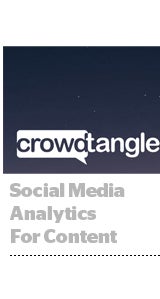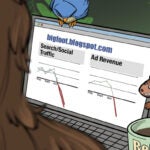 The best way to cover the pope’s visit to the United States on social media was to highlight the moments where he kissed babies.
The best way to cover the pope’s visit to the United States on social media was to highlight the moments where he kissed babies.
Such an insight feels intuitively right, but USA Today social media editor Mary Nahorniak only made that discovery using CrowdTangle, a social media tool that helps publishers analyze the best-performing content on their pages and those of their competitors.
“The first day of his visit, of all our competitor posts, the only pope story in the top 10 was one of those kissing-baby moments,” Nahorniak said. USA Today focused its social media posts on moments people wanted to share.
CrowdTangle helped USA Today discover how to cover the pope’s visit so its content would perform well on social media. It also showed the publisher whether those posts overperformed.
“I can’t get that kind of information anywhere else,” Nahorniak said.
Most social media tools cater to Fortune 500 brands, not content producers. CrowdTangle, which has been flying under the radar for four years, didn’t originally aim for publishers either.
Founder Brandon Silverman originally created CrowdTangle as a tool for social organization and change when hundreds of Facebook pages dedicated to the Occupy Wall Street movement sprouted.
While the platform as a whole didn’t take off – it was originally a tool just for Facebook – one feature did: the ability to show what content overperformed on Facebook pages. Silverman realized he had a business, just not the one he expected.
CrowdTangle has since expanded to Twitter, Instagram, Vine, Reddit and YouTube and is used by BuzzFeed, Mic, Vox, USA Today, Refinery29, BBC and College Humor. It’s also used by nonprofits (UNICEF and the American Red Cross), sports leagues (Major League Baseball), sports teams (the New England Patriots) and brands (Red Bull and L’Oréal).
“There’s not a great way of finding out who else is sharing your stuff or what the big thing is being shared that day, and CrowdTangle does that.” College Humor editor-in-chief Andrew Bridgman said.
College Humor uses CrowdTangle to assemble insights. The word “troll,” for instance, makes content perform particularly well.
USA Today and College Humor are also fans of a new tool called Link Checker, which shows who shared an article.
“If you’re getting a bunch of traffic from social to a story and you don’t know why, this tool tells you it’s because the White House shared it,” Nahorniak said. She has shared the tool with an investigative journalist, who likewise was interested to see which policymakers had been sharing an article.
CrowdTangle’s usefulness extends to content marketing, whether it’s for an individual brand or publisher-crafted branded content.
“Social media turned everyone into a publisher,” Silverman said. “You can either treat social as another avenue for your ads, or as a way to share interesting content with your customer base.”
At USA Today, Nahorniak will share insights with the marketing team, using CrowdTangle data to advise them which posts to amplify.
Quay Quinn-Settel, director of marketing for College Humor, said CrowdTangle enables the publisher to craft branded content that’s more likely to connect with the publisher’s audience.
While CrowdTangle enables publishers and brands to recognize virality, that doesn’t mean it’s responsible for click-bait articles that clutter social media feeds.
“Our platform is not out of the box,” Silverman said. “Publishers can use it in very different ways. It has a different impact in the hands of Refinery29 or BBC or The New York Times.”
But he does credit the tool for helping publishers surface more diverse, unusual stories, and for learning that stories distributed on social media need a different wrapper.
“What Upworthy proved when it came on the market is that a lot of people create amazing stories, but in the social era, you have to package it and frame it in a way that works on social,” Silverman said. “Our system makes sure people understand how their stories are going to move on social.”















